Opening Sonic Adventure’s Mechanical Heart
Get a load of this!
A quick note for this feature: normally when I write an article “celebrating” a game, I try to keep any actual plot developments vague. I see Sonic Adventure as a game primarily about its different characters and their arcs, however, and so I feel the best way to talk about it would be to go in-depth with one of those arcs. That being the case, the latter half of this article contains spoilers for a relatively small part of a 20+ year old game. If you haven’t played Sonic Adventure before, you should! It’s cool!
Sonic means a lot of things to a lot of people. His creators crafted him to have meaning from the outset; he had to embody universal values as a mascot, he had to express “coolness,” and his actions carry a message of environmentalism. What Sonic means to any one individual, however, likely varies based on the Sonic experience that impacted them the most.
For me, defining the “Sonic experience” isn’t just about Sonic. No game demonstrates that better than Sonic Adventure, which gives you glimpses into the lives of Sonic’s extended cast that in their own ways, explore what Sonic as a series is all about. E-102 Gamma’s episode reflects the Sonic experience in unconventional yet meaningful ways. Gamma holds the key to unlocking the hearts of both Sonic Adventure and the Sonic series itself.
Gamma and Sonic completely contrast with each other on virtually every level. You might think of rivals like Shadow or Knuckles as being Sonic’s opposites, but those characters at least share some superficial similarities with him while going down their own paths. Dr. Eggman, despite differing from Sonic in every other way, can at least stand against him as an equal opposing force. Gamma cannot even claim that. Sonic and Gamma’s designs, their roles in the story, and even how they function in-game fundamentally clash.
This is appropriate because Dr. Eggman designed Gamma to clash with Sonic. He just didn’t do so with very high expectations. To put it bluntly, Gamma is a mook; the disposable kind of enemy that Sonic would normally curl into a ball and smash though without thinking about it. Gamma isn’t important, Gamma isn’t a main character, Gamma isn’t even “cool,” at least in the way Sonic and his friends are. In a world where super-powered critters with attitude are running around and fighting off robot armies, Gamma is just an emotionless cog in the machine that makes those adventures possible. At least at first. The role reversal of placing you in the giant metal shoes of a disposable enemy marks a dramatic departure from what you might expect from a Sonic game.
Gamma represents everything that Sonic aims to destroy on a thematic level. As previously noted, Sonic’s exploits contain undercurrents of environmentalism. Dr. Eggman converts animals into robots and bulldozes nature for his secret bases and business ventures (at least presumably that’s what he wants to do with those amusement parks after building them, who knows). Gamma stands as a testament to Dr. Eggman’s industrious nature – it is a war machine and somewhere deep inside its metallic shell lies an animal being harvested for its energy.
Simply being a robot conflicts with Sonic philosophically. One way to view Sonic is as a representation of freedom. He emancipates animals from their robotic coils, runs wherever he likes, and has been known to spout infinitely relevant lifestyle advice that more or less boils down to taking advantage of the freedom in your life.
As a video game, Sonic’s original platformer design differs from most of his contemporaries by focusing on open levels with multiple pathways that you can reach through careful jumping and exploitation of your environment with physics and momentum. As long as you’re in tune with your abilities and the world around you, you can go anywhere you want to.
Sonic Adventure opened Sonic’s world up to the third dimension. This new style provided more freedom on a basic level: the player could move in more directions, the levels could be more sprawling, and the camera could display more dynamic angles. This technology shift also opened up a sense of scale when traversing the environment. By laying out all the different layers to a level in an interconnected 3D space, Sonic can easily jump to different parts of a stage, creating free-form shortcuts and routes through them. Whether in 2D or 3D, playing as Sonic incorporates “freedom” directly into the game design.
Gamma has no freedom. On a narrative level, Gamma serves Dr. Eggman and has no real autonomy. Although that changes eventually, even after that change, Gamma continues acting towards a sense of duty. Duty defines Gamma.
That duty carries over into Gamma’s gameplay. Timers typically appear as a core part of Sonic game design. Notably, however, timers in Sonic usually count upwards. This decision sends a specific message: Sonic levels aren’t about pressuring you to reach the end in a certain timeframe. The challenge the timer poses is mostly a personal one – you can generally choose to either complete levels at your own pace or as quickly as you can. When playing as Gamma, the timer counts down rather than up, which gives Gamma’s levels an entirely different meaning: you have a specific task to complete and your time is not your own. You’re working on a schedule.
Gamma’s stages in Sonic Adventure are more abbreviated and straightforward compared to Sonic’s stages. The only true deviations Gamma can make are for fighting enemies, which grants extensions to the timer. You may have been looking forward to my overanalysis for this mechanic, but honestly I’m pretty sure this is just a contrived idea to make the timer countdown more interesting. It makes you balance fighting enemies with completing the stage quickly. Look, not everything has to have some deeper meaning, alright!?
Sorry for snapping at you. Ok, well, I suppose you could interpret this mechanic as a morale boost for Gamma. I’m sure Gamma gets a kick out of eradicating dolls of Sonic’s friends and “saving” Eggman’s other creations. If you really want to be generous, you could say that you’re literally giving yourself more time to find Froggy in the Emerald Coast stage by blowing away your competition.
How Gamma dispatches with enemies also goes against how Sonic fights. Being a hedgehog, Sonic always makes direct contact with enemies. The homing attack move introduced in Sonic Adventure specifically ensures that Sonic bumps through enemies one at a time in a chain, directly integrating them into his path for traversing the stage. In comparison, Gamma blasts through enemies in a relatively impersonal manner. Gamma’s laser locks into anything in the immediate vicinity with nothing more than a simple glance in an enemy’s direction. For Sonic, enemies feel like necessary obstacles to overcome in order to reach the end, often forming a literal path for him to traverse, while with Gamma they are pure distractions.
You get the idea. Sonic Adventure goes to great lengths to portray Sonic and Gamma as complete opposites. Sonic emphasizes nature, freedom, and a warmer, more personal touch to adventure, while Gamma is artificial, enslaved, and impersonal. While this disparity emphasizes the core traits of Sonic by comparison, that’s not the whole story. Gamma grows and changes in unexpected ways as the story progresses. It’s the combination of Gamma’s fundamental differences from Sonic mixed with Gamma’s progression as a character that truly highlight what lies at the heart of Sonic.
Robots can’t feel real emotion. Modern science will tell you that at best robots could simulate something similar to emotions, but never the real thing, although the scientists who tell you that clearly never tried to build something that could fight hedgehogs. Gamma’s episode is essentially a story of a robot developing independence, sentience, and most importantly, emotions through its interactions with Sonic and his world. The idea that Dr. Eggman could accidentally stumble upon such a technological miracle while just trying to make something that can shoot at Sonic is amusing on its own, but it also provides for a surprisingly compelling narrative.
How exactly Gamma developed its own will is unclear. There’s an argument to be made that the entire E-series robot line has similar capacity for development: the story opens with E-101 Beta displaying signs of pride and ego in its confrontation with Gamma, and after failing to secure Froggy, E-103 Delta briefly looks pleadingly at Gamma before being banished by Dr. Eggman. Gamma happens to be special though, as it goes beyond displaying just tinges of emotion and undergoes a complete revolution of perspective.
The animal inside Gamma also begs the question as to what Eggman’s robots really are. One of my favorite aspects of Gamma’s arc is how it keeps the idea of who Gamma is ambiguous. Is Gamma the animal inside the machine or is Gamma a distinct entity that just uses an animal as its power source? Personally, I interpret Gamma’s identity as a bit of both ideas. Gamma is its own distinct entity, but it’s likely that its power source is what influences its capacity to develop emotions and change.
Any pseudo-scientific explanation of Gamma doesn’t really matter, though, as I believe the true point of Gamma’s development is that it became possible through its interaction with other characters. Interacting with Amy and Sonic specifically incited Gamma’s growth.
Amy’s arc in Sonic Adventure focuses on compassion and independence, which reflect shades of Sonic’s warmth and freedom, and her small interactions with Gamma kickstart its change. When Amy chooses to protect her bird friend and appeals to Gamma for sympathy, it makes Gamma begin to question its perspective. It expresses confusion at how Amy could help a stranger. When the bird flies up to Gamma, essentially pleading directly to Gamma itself, this triggers a shift in Gamma’s worldview. Gamma lets them go in its first true act of compassion.
This change then becomes solidified when Gamma confronts Sonic shortly afterwards. Sonic, of course, is freedom incarnate, and so I consider this more than a literal battle. It is a philosophical clash between Sonic and Gamma, the polar opposites. As is often said by someone out there probably, the best way to gain a new perspective is to be repeatedly smacked in the head with it, and Sonic delivers just that. The actual results of this fight differ depending on the character perspective, but for my money, Sonic likely wins this one, and I don’t mean that in a power level sense.
What matters most is what comes after the fight, and it makes more sense to me that Amy would jump in front of Gamma and protect it, as in Sonic’s story, rather than plead with it to spare Sonic, as is the result in Gamma’s story. Sonic’s version more clearly impacts Gamma: Amy protected the bird she didn’t know, and now she’s even protecting her former captor. The result is technically the same either way, however. Amy’s compassion and selflessness stops the battle prematurely and everyone goes their separate ways.
Following this incident, Gamma undergoes a major transformation. With Amy’s compassion and Sonic’s sense of freedom directly imparted onto Gamma, it decides that Dr. Eggman is no longer a master worth serving. More than that, it gives itself a new mission: save its “friends,” the other E-series robots.
Gamma interprets Amy and Sonic’s philosophies without copying them exactly. That’s why I say that Sonic Adventure’s character stories reflect the Sonic experience more than exactly replicate it. To Gamma, saving its friends means destroying them. This action frees them from Dr. Eggman’s grasp and lets the animals inside them run free. Rather than abandon the idea of duty altogether and embracing Sonic’s concept of freedom, Gamma simply appoints itself as its own master and sets out a new mission to complete.
This mission leads Gamma to destroying its brethren one-by-one until only two remain: Gamma and Beta. I really love the scene leading up to this confrontation: Gamma runs through its targets one more time, this time including itself at the end. Despite awakening to its newfound perspective, Gamma still considers itself a candidate for “saving,” which tips off its true intent for the final battle.
Earlier, I made a distinction between true opposites and rivals with similar characteristics, and that distinction remains important because E-101 Beta happens to be the latter for Gamma. Whereas Gamma chose to rebel against Dr. Eggman, Beta chose to double-down on Dr. Eggman’s control. Gamma underwent an ideological change, while Beta underwent a physical one. In a gameplay sense, their relative equality is conveyed by the fact that Beta can deflect Gamma’s shots, as opposed to every other boss in the game, until it leaves itself vulnerable via a failed attack. Their parallel is drawn further by the animals inside them, as they both happen to be from the same family, which is revealed through brief screen flashes that Gamma seems to access like a memory.
Gamma’s journey to self-actualization began with its battle against Beta, so it’s only appropriate that the separate paths each robot took culminate at the end. This idea is actually ingrained into the game on a level beyond just the plot structure: the end of Gamma’s theme song directly leads into the beginning of Beta’s theme song. This is in fact the end of Gamma’s journey, as during their clash, the robots end up finishing each other off.
As hinted at earlier, Gamma did not intend to come out of this fight alive, so while this may appear to be a sad end for the character, it is also exactly what Gamma wanted. If you subscribe to Gamma being a separate entity from the animal inside of it like I do, this is essentially the ultimate act of self-sacrifice. Just like how Amy put herself in harm’s way for strangers, so too did Gamma, who chose to die for a bird it could never meet. It is sad that Gamma dies here, but it is also inspiring. In its own way, Gamma showed true compassion and freedom well beyond the limits of its programming.
Gamma’s story is just one reflection of the Sonic experience, and one example of why Sonic Adventure happens to be special to me. You could write similar articles about every character story in the game, Gamma’s story just makes a particularly strong impression. Sonic Adventure aimed to be more than just a great Sonic game, it aimed to be a comprehensive Sonic experience by including all the philosophies and life lessons the character embodies. These principles are so universal that even Gamma, the complete opposite of Sonic, can embrace and grow from them. That’s what makes Gamma so interesting. If Gamma can embrace freedom and change its life to the course that suits it best, then anyone can.

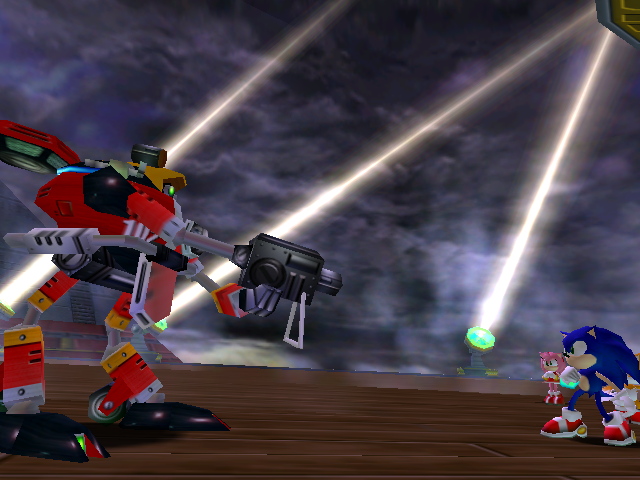

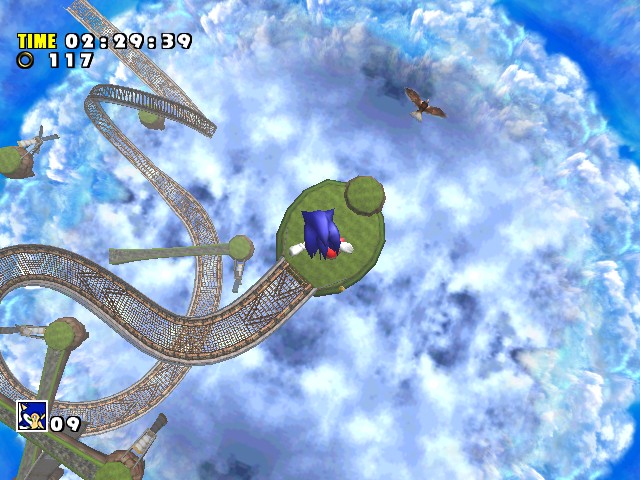

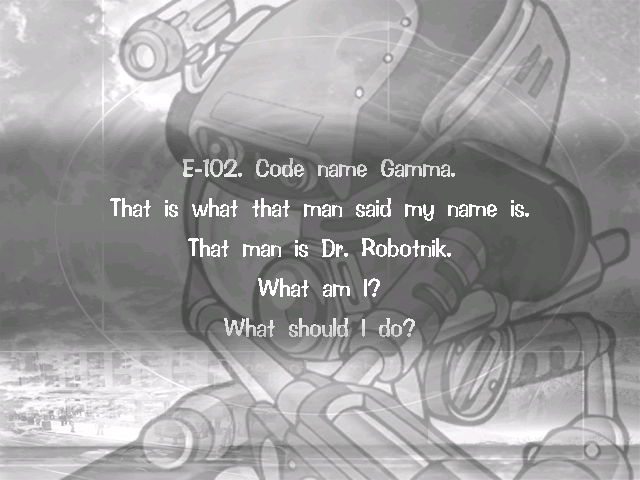
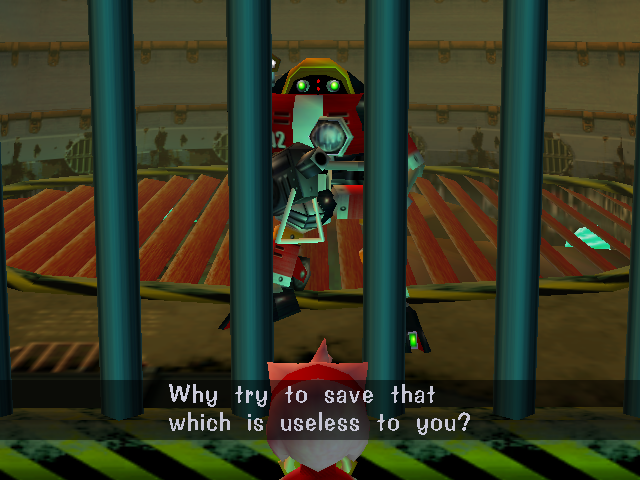
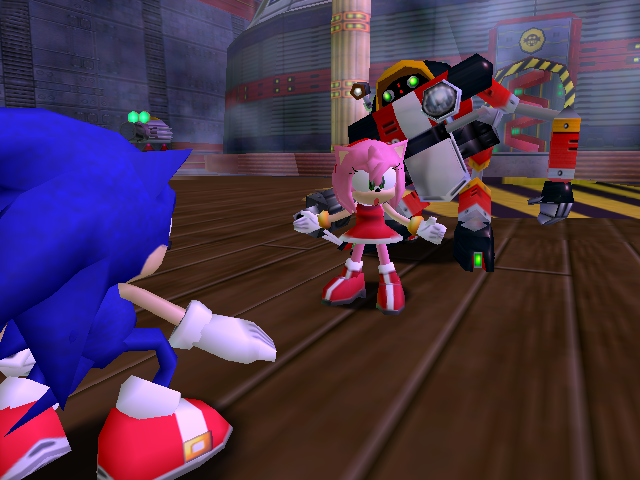
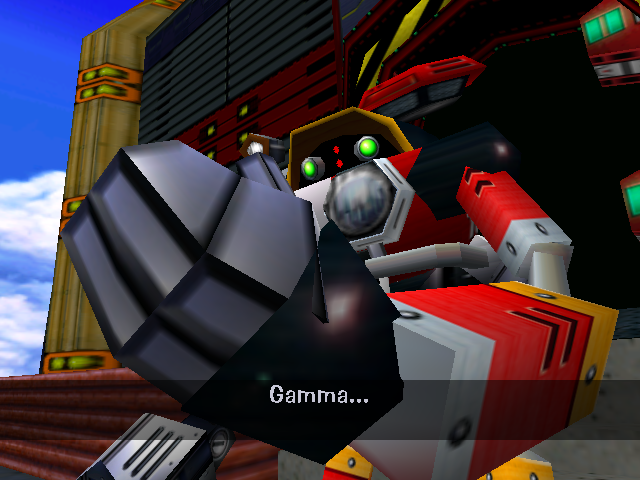
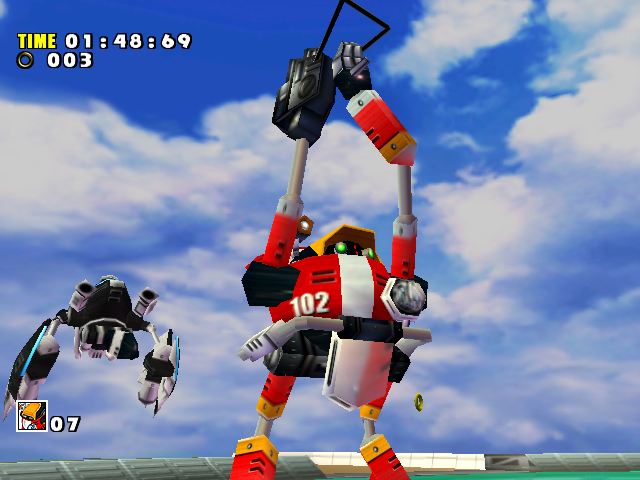
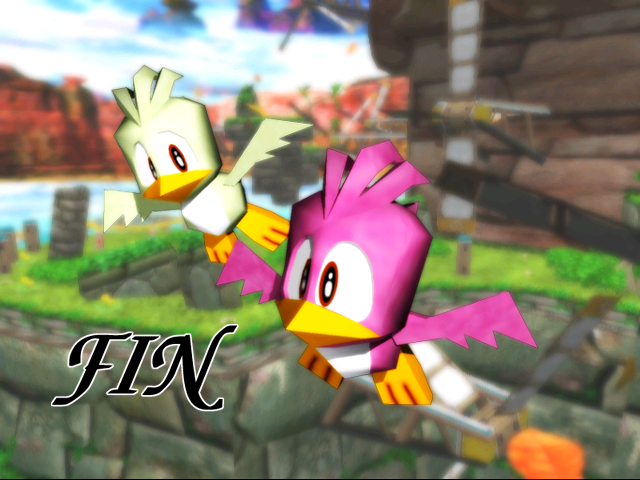
Comments (0)